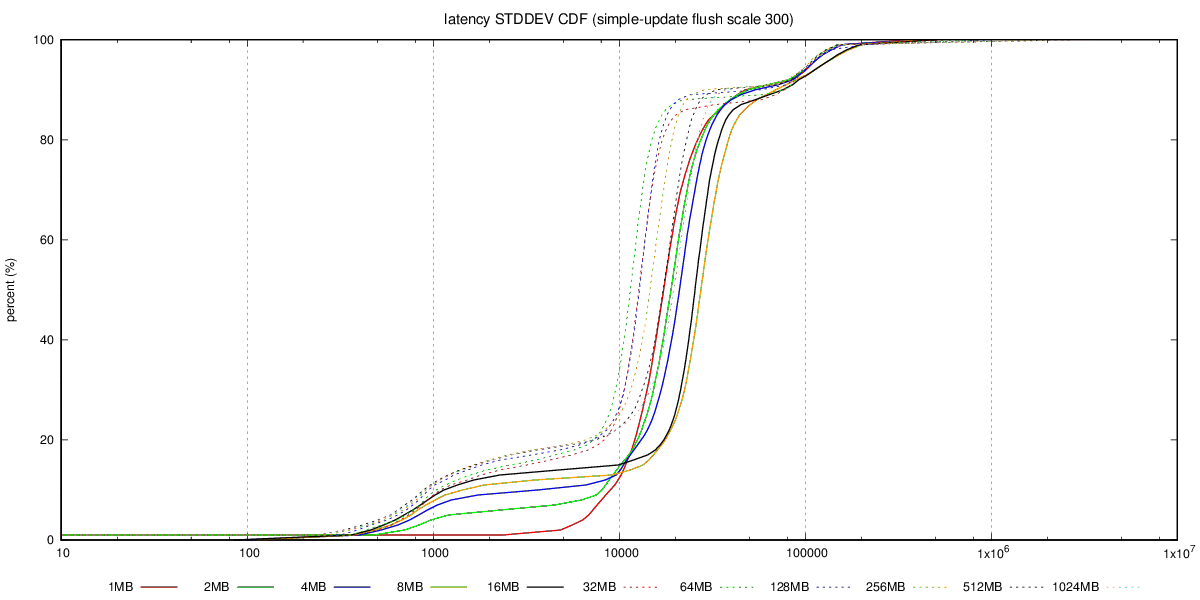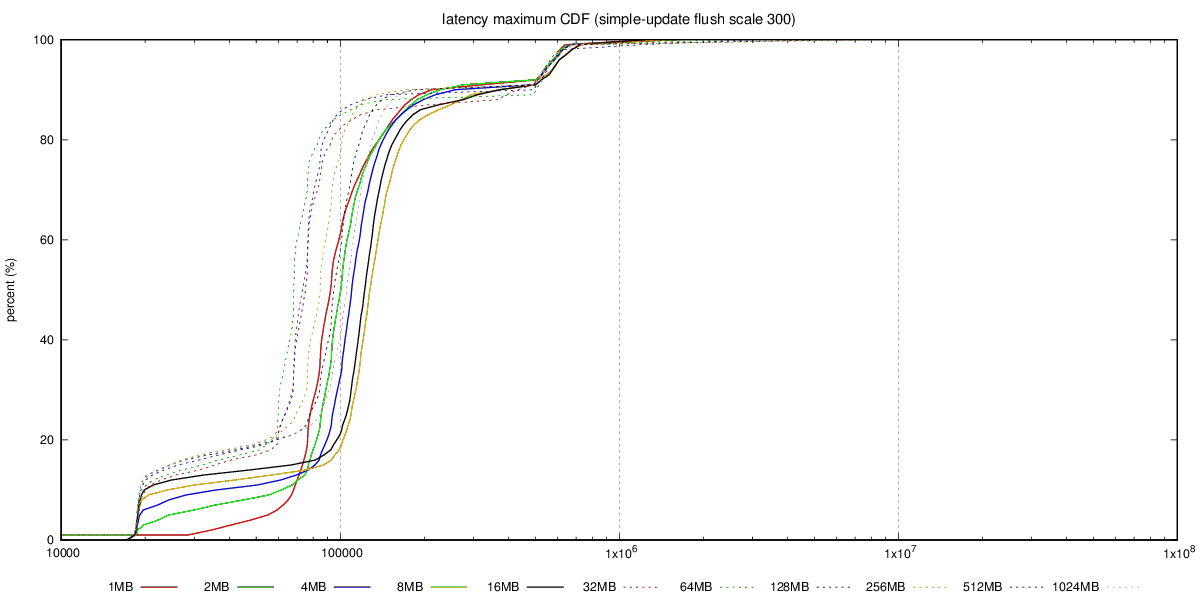Re: [HACKERS] measuring the impact of increasing WAL segment size
| От | Tomas Vondra |
|---|---|
| Тема | Re: [HACKERS] measuring the impact of increasing WAL segment size |
| Дата | |
| Msg-id | c543aacb-5205-e88a-9275-360baf764930@2ndquadrant.com обсуждение исходный текст |
| Ответ на | Re: [HACKERS] measuring the impact of increasing WAL segment size (Andres Freund <andres@anarazel.de>) |
| Список | pgsql-hackers |
Hi, On 08/15/2017 03:37 AM, Andres Freund wrote: > Hi, > > Thanks for running this! > > On 2017-08-15 03:27:00 +0200, Tomas Vondra wrote: >> Granted - this chart does not show latency, so it's not a complete >> picture. > > That'd be quite useful to see here, too. > Unfortunately I don't have the detailed transaction log, with latencies for individual transactions - that would be an order of magnitude more of data, so I decided not to collect that for the initial tests. I'm willing to collect that info for a smaller subset of the tests, though, so if you can pick a few combinations that you find interesting, I'll get that running. What I have collected is the aggregated transaction log, with 1-second resolution, i.e. for each second we have TPS, min/max latency, sum(lat) and sum(lat*lat), etc. The best way to summarize this is CDF chart, I think, and I have already generated those into the git repository. See for example this, with charts for the SATA RAID case: https://github.com/tvondra/wal-segment-size-tests/tree/master/xeon-e5-2620v4-sata-raid/simple-update/300/flush The latency-max-cdf.png shows max(latency) for the 14400 samples (each second of the 4-hour run), latency-stddev-cdf.png shows STDDEV(latency). It's not perfect, but better than nothing. Reading CDF charts is not difficult - essentially lines 'above' other lines are better, as it shows most values are lower (which is what we want both for latency and stddev). > >> Also, if you care about raw OLTP performance you're probably >> already running on flash, where this does not seem to be an issue. >> It's also not an issue if you have RAID controller with write >> cache, which can absorb those writes. And of course, those >> machines have reasonable dirty_background_bytes values (like 64MB >> or less). > > The problem is that dirty_background_bytes = 64MB is *not* actually > a generally reasonable config, because it makes temp table, disk > sort, etc operations flush way too aggressively. > That is a good point. I with we could set amount of dirty data per filesystem, that would make configuring this so much simpler ... > >> b) The "flushing enabled" case seems to be much more sensitive to >> WAL segment size increases. It seems the throughput drops a bit (by >> 10-20%), for some segment sizes, and then recovers. The behavior >> seems to be smooth (not just a sudden drop for one segment size) >> but the value varies depending on the scale, test type (tpc-b >> /simple-update). > > That's interesting. I presume you've not tested with separate data / > xlog disks? > No, mostly because of lack of time / additional complexity. But I'm willing to repeat some of the tests in a more complex setup. Perhaps you can recommend which test to rerun? regards -- Tomas Vondra http://www.2ndQuadrant.com PostgreSQL Development, 24x7 Support, Remote DBA, Training & Services -- Sent via pgsql-hackers mailing list (pgsql-hackers@postgresql.org) To make changes to your subscription: http://www.postgresql.org/mailpref/pgsql-hackers
Вложения
В списке pgsql-hackers по дате отправления:

